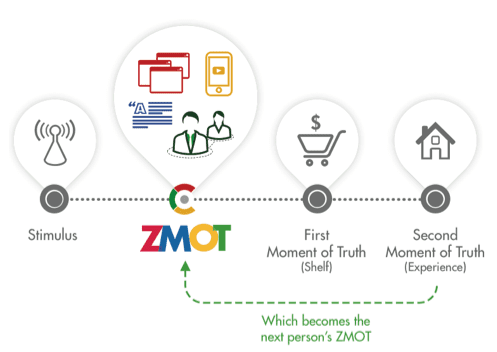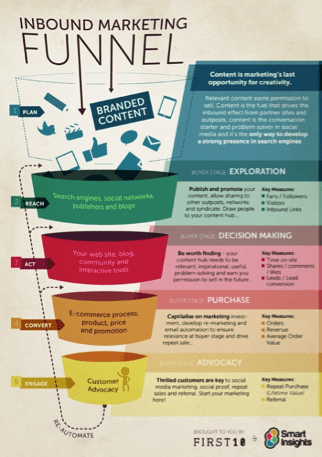Understanding Google’s latest research on micro-moments and the implications for your marketing
It’s no secret that mobile has dramatically impacted how we do business and how consumers interact with brands online - the latest mobile adoption data indicates that mobile is still on course to overtake fixed internet access and that mobile ad spending accounts for 49% of digital ad spending.
As a result of this mobile shift, Google has conducted some interesting ethnographic research over the last year to explore how consumer behaviour is changing and gain an understanding into the needs of real people. Some of the stand out insights from the research includes:
- 82% of smartphone users use their phones to influence a purchase decision in a store
- 62% of smartphone users are more likely to take action right away to solve an unexpected problem or task because they have a smartphone
- 90% of smartphone users have used their phone to make progress towards a long-term goal or multi-step process while out and about
- 91% of smartphone users turn to their phone for ideas while doing a given task
Google’s research has led them to the conclusion that consumer decisions don’t happen in a defined, logical order, if they ever did. Instead, they happen at seemingly random times in a consumer's life - what Google have defined as ‘micro-moments’.
What exactly are 'Micro-moments'?
Micro-moments are moments when consumers act on a need, e.g. to learn something, do something, discover something, watch something or buy something. They are intent-rich moments where decisions are being made and preferences shaped.
Google recommends marketers consider four key moments and explain the importance of Moments in relation to mobile devices:
"We turn to our phones with intent and expect brands to deliver immediate answers. It’s in these I-want-to-know, I-want-to-go, I-want-to-do, I-want-to-buy moments that decisions are made and preferences are shaped”.
Research presenting the increasing importance of these four 'Moments' is summarised in the visual below.

It’s not just Google who are pushing this concept. Forrester analyst Jeffrey Hammond tells us that ‘Consumer Engagement Is Shifting Toward Micro Moments’ whilst Brian Solis of Altimeter Group has explained ‘Why CMOs Need to Invest in Micro-Moments’.
From the Zero Moment of Truth to Micro-moments - an evolution
Before looking at micro-moments in more detail, it’s worth re-visiting Google’s research on Winning the Zero Moment of Truth from 2011, which helped marketers involved in advertising, search and social media understand how they can win key moments of truth in the early stages of discovery.
The core premise of the research explained how the traditional ‘mental model’ of marketing, where a consumer follows a predictable consumer journey from ad (stimulus) through to purchase (first moment of truth) and experience (second moment of truth) has been disrupted - consumers do not react instantly to advertising. Instead, they proactively look at reviews, ask friends for advice on social media or research products on blogs before making a decision:

The introduction of the Zero Moment of Truth (ZMOT) challenged marketers to consider new, intentional strategies to enable brands to become discoverable and capture attention in the discovery stage before guiding consumers through to purchase.
Micro-moments is follow-up to ZMOT and influenced by the increasingly ubiquitous nature of mobile among consumers. Instead of thinking about one common Zero Moment of Truth in any given situation, Micro-moments encourages marketers to consider many different, real-time, intent-driven micro-moments related to hundreds of different scenarios, all of which give marketers an opportunity to shape consumer decisions.
How do micro-moments influence modern marketing?
In many ways the underlying theme of Google’s Micro-moments research is not new. The idea that the consumer journey no longer follows a predictable, linear model, and the need to create more fluid, bespoke personas for our customer groups, has been covered before:

However, where I think Micro-moments is particularly interesting is in the mind-set shift it encourages us to adopt. Living in a mobile-orientated world has dramatically impacted how consumers think, search and buy online and as a result marketers must respond accordingly in order to succeed.
Micro-moments in action
With Google’s data and research in mind, let’s consider some examples of Google’s Micro-moments in action and how they may influence marketing decision-making:
People evaluate purchase decisions ‘in-the-moment’
Consumers have their smartphone to hand at all times and this has implications for brands who sell products in physical locations. According to Google, 1/3 of online consumers aged 18-34 say information discovered through search caused them to buy a more expensive product in a store if that product is more effective.
This insight provides a clear opportunity with search. Mobile means consumers can instantly search and compare products in the moment, meaning marketers must win these moments by providing timely and relevant information, such as product details, reviews and testimonials.
People solve problems ‘in-the-moment’
If something breaks or goes wrong, or if a consumer suddenly thinks of something they might need in a given moment, they’re likely to pick up their smartphone to take action. Google has found that online consumers purchase in unexpected places - 39% in the kitchen; 28% in the car; 21% in the bathroom.
In moments like this it’s important to be found so search is again a key consideration. However, in order to seal the deal marketers must also ensure that the mobile experience is consistent from start to finish. The user experience and shopping process must make things easy for the consumer, meaning products are first easy to find, followed by a painless checkout process.
People pursue big goals in small moments
We often think that buying a large purchase, such as a new piece of technology, car or even house, as something that requires dedicated research time carried out in one go. However, nowadays research is conducted in ‘stolen moments’ spread across the day, for example waiting in a queue, during a lunchtime break or sitting in an airport or train station.

Google has found that mobile queries for mortgage calculators have grown 66% since last year, illustrating the demand for research tools such as these ‘on the go’. Mobile moments are critical within long consideration journeys, with people chipping away at bits of research in free moments. Marketers must therefore ask:
• How can I be helpful at each moment and build consideration?
• Am I shaping preferences starting from the beginning?
• Do I offer the right experience for the screen and the context?
The micro-moment action plan
In order to be there when our customers need us, Google offers the following advice:
1. Make a moments map
Identify a set of moments you want to win or can't afford to lose by examining all key phases of the consumer journey.
2. Understand customer needs in-the-moment
For each moment you want to win, put yourself in the consumer's shoes. Ask “What would make this easier or faster? What content or features would be most helpful for this moment?”
3. Use context to deliver the right experience
Leverage contextual signals like location and time of day to deliver experiences and messages that feel tailor-made for the moment.
4. Optimise across the journey
People move seamlessly across screens and channels. Ensure your brand delivers seamlessly in return and don’t let competing objectives or department silos stand in the way.
5. Measure every moment that matters
While the return on investment for certain moments may not yet be directly measurable, use credible estimates to ensure nothing’s falling through the cracks.










